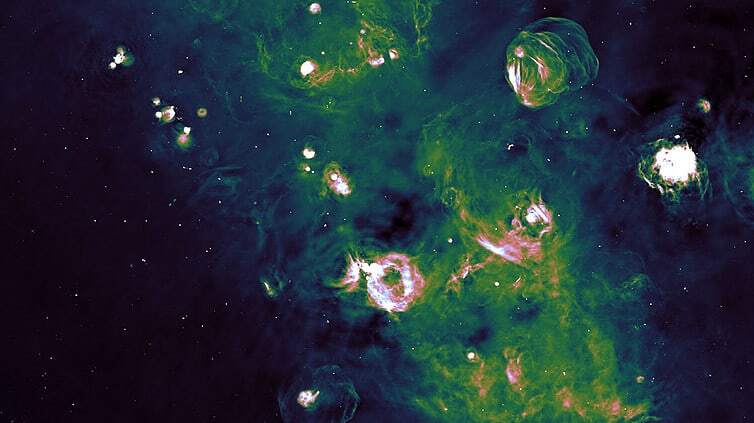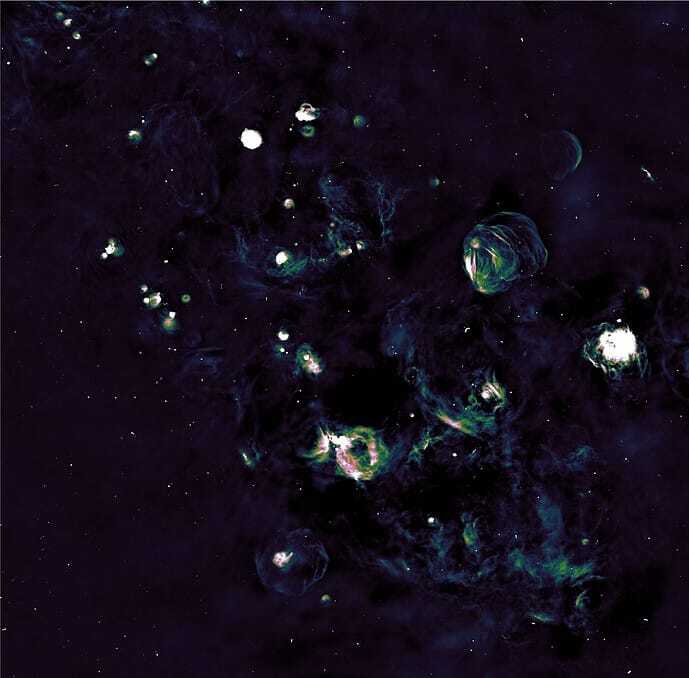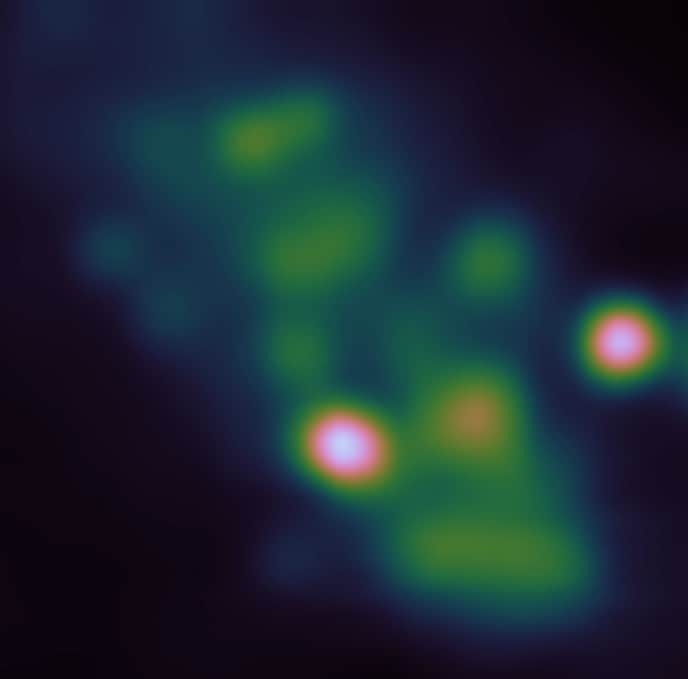18.01.2023
Why do we see so few remnants when so many stars have lived and died?

Combined images from the ASKAP and Parkes radio telescopes. Credit: R. Kothes (NRC) and the PEGASUS team
A combined image from the Parkes radio telescope and the Australian Square Kilometre Array Pathfinder (ASKAP) has given scientists the most detailed radio image yet of our galaxy.
The image highlights hydrogen gas– likely from supernova remnants (SNRs) or new stellar nurseries – in the galactic plane, and the team is hoping it will shed much more information on why SNRs seem to be so rare.
The researchers believe this new image shows twenty possible SNRs, a huge boost to the number already known.
SNRs are giant clouds of dust and gas created from a star going supernova. The resulting nebula are beautiful, and relatively short lived – lasting only a few tens of thousands of years.

ASKAP telescope image of the Galactic SNRs. Credit: R. Kothes (NRC) and the EMU and POSSUM teams
But models predict that, due to the age and density of the Milky Way, we should see the remnants of many, many stars that have lived and died. Instead, we only know of thirty or so in the Milky Way, the Large and Small Megallanic Clouds and Andromeda Galaxy.
“It’s not totally clear why SNRs are hard to find,” Professor Andrew Hopkins, Macquarie University astronomer told Cosmos.
“Some of it is just a sensitivity issue and needing more sensitive observations to pick up the faintest things. But another part is that they not only become fainter but also larger as they age, which makes them very dim and diffuse.”
Hopkins is the lead scientist on ASKAP’s Evolutionary Map of the Universe (EMU) project, which published details on a pilot survey in 2021. A paper on this new image and any SNR candidates has not yet been finalised.

Parkes Radio Telescope image of Galactic SNRs. Credit: E. Carretti (INAF) and the PEGASUS team
The researchers used the Parkes and ASKAP telescopes because of their differing resolutions. Parkes, which is a 64-metre dish, is one of the largest single dish radio telescopes in the world. However, ASKAP is an interferometer telescope, which uses multiple telescopes placed very far apart to mimic a single telescope with a 6-kilometre-wide dish.
“However, since even with 36 dishes we can’t sample all the light falling on that 6km aperture, the ASKAP image is not sensitive to the large-scale radio emission that Parkes does detect,” Hopkins says.
“Hence, combining the information from both images gives us the best of both worlds – ASKAP’s fine resolution together with the large-scale emission from Parkes, each filling in the gaps of the other, to give us the best fidelity image of our Milky Way Galaxy.”
“The eventual results will be an unprecedented view of almost the entire Milky Way, about a hundred times larger than this initial image, but achieving the same level of detail and sensitivity,” he adds.
“It is estimated that there may be about 1500 more supernova remnants in the galaxy that astronomers haven’t discovered yet. Finding the missing remnants will help us unlock more of an understanding of our galaxy and its history.”
Quelle: COSMOS

